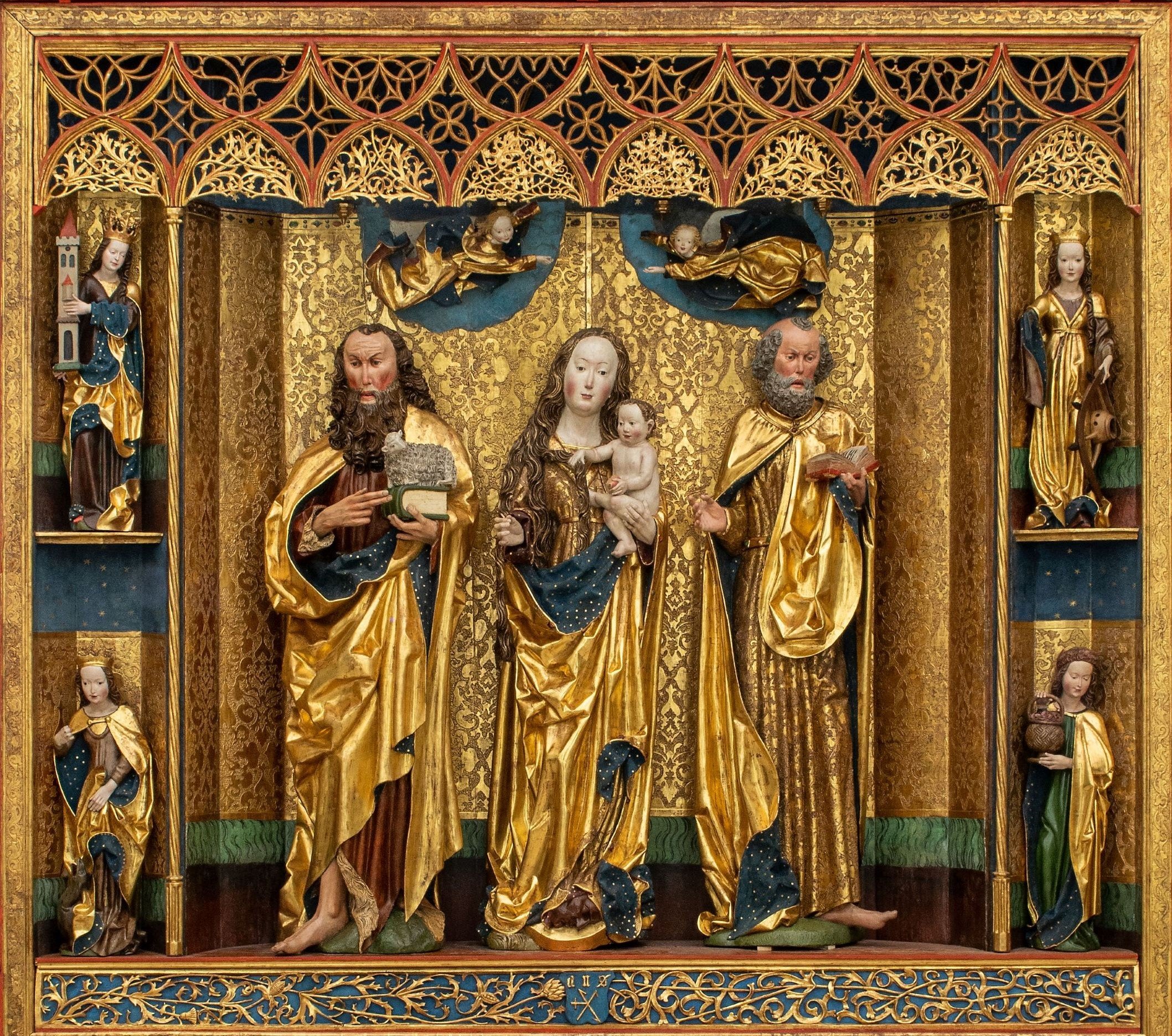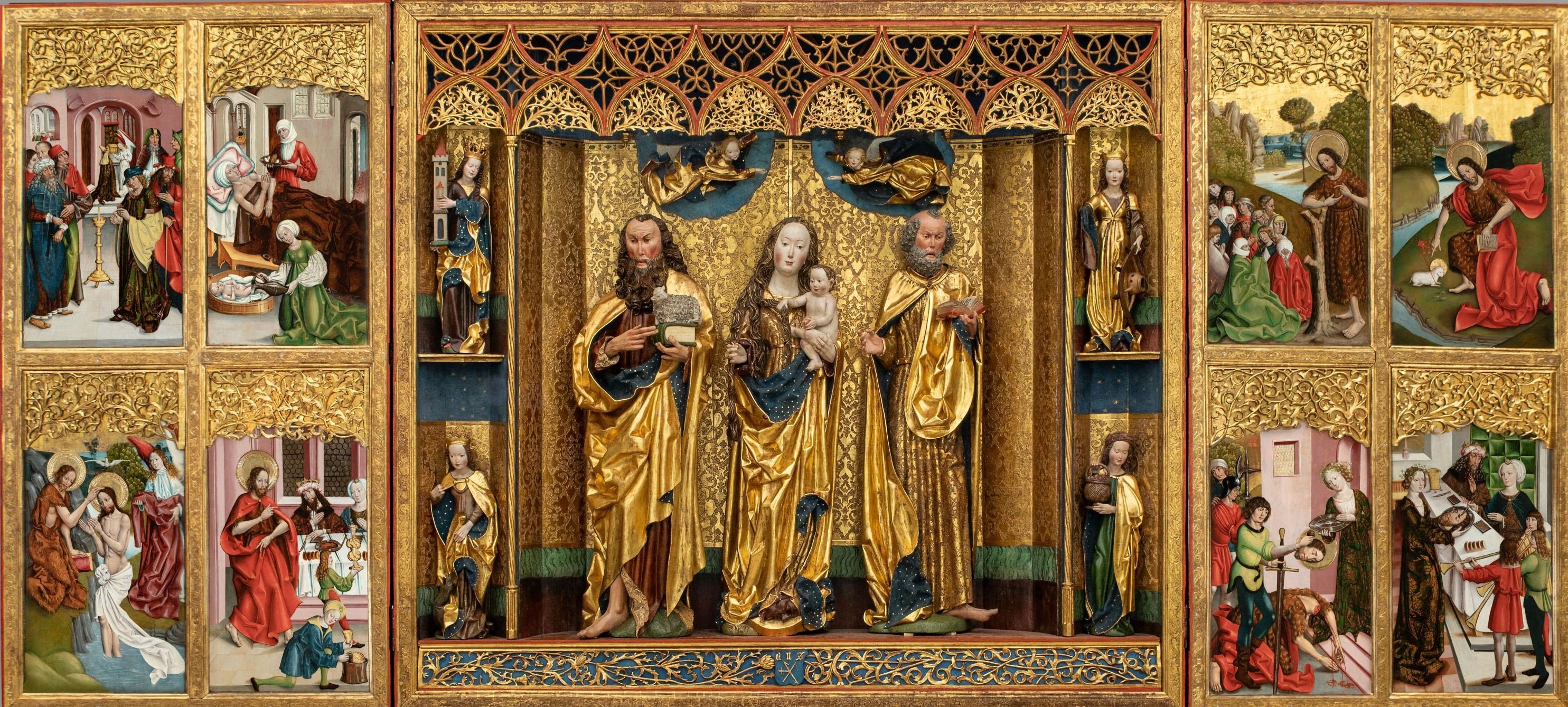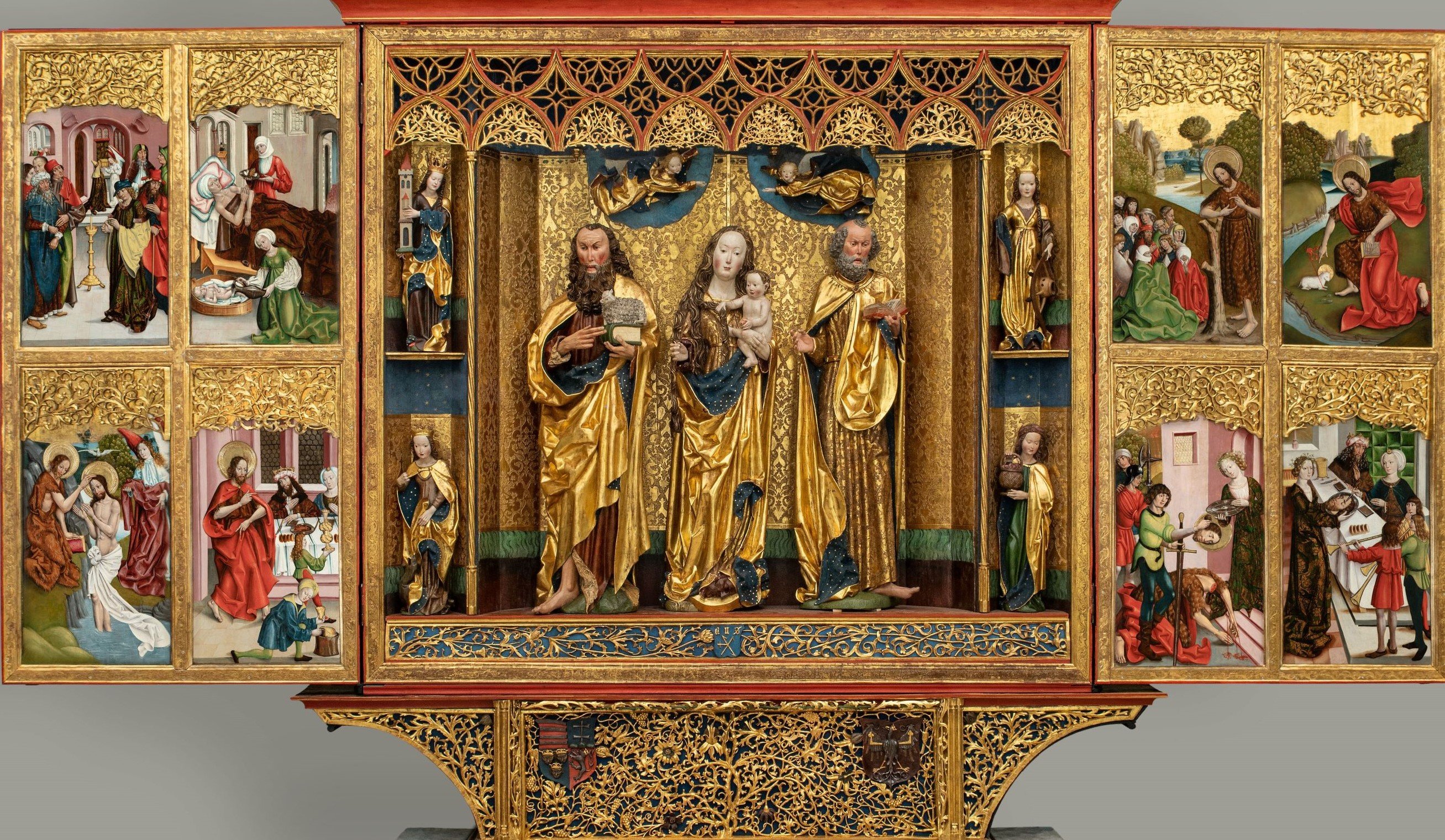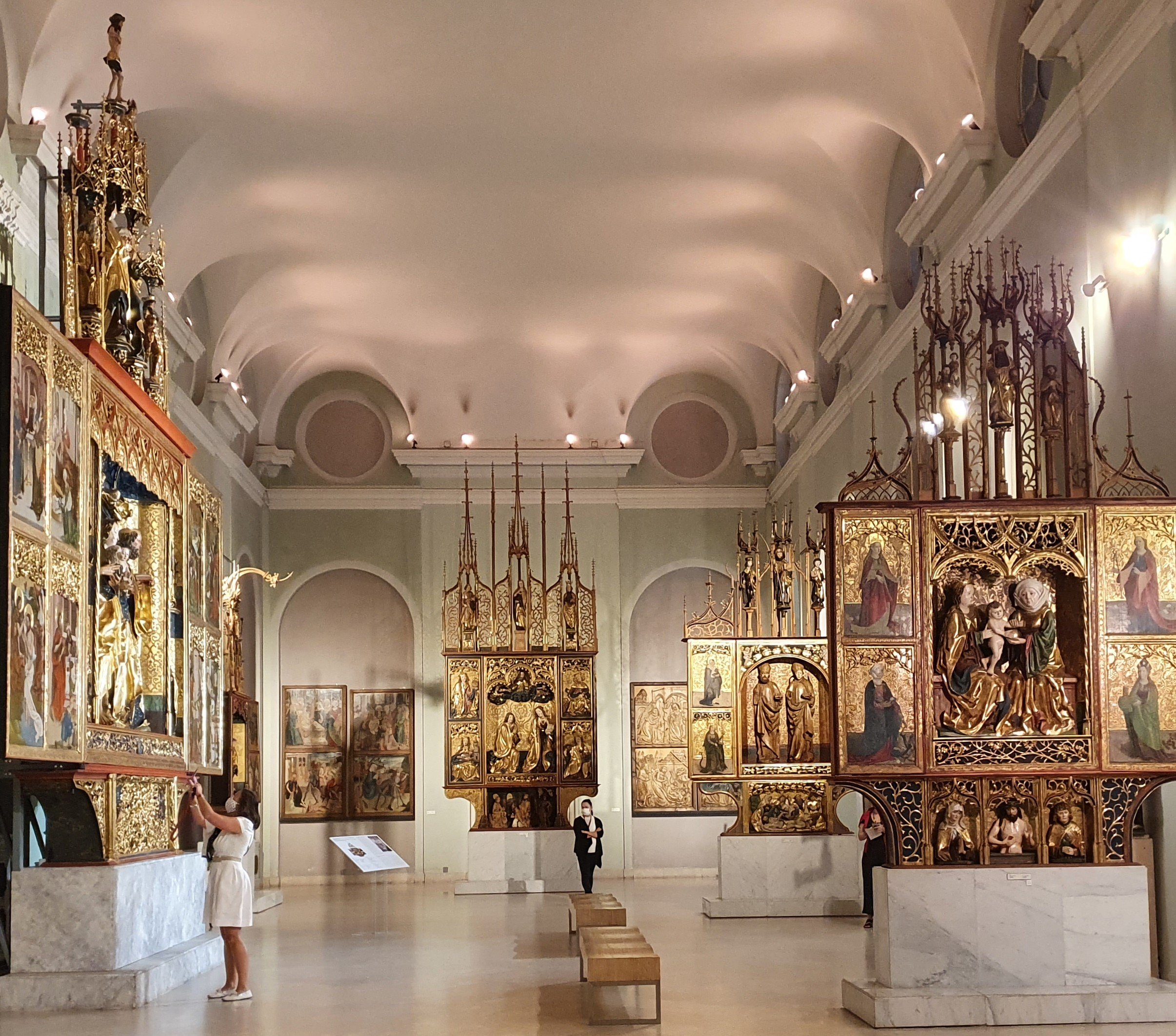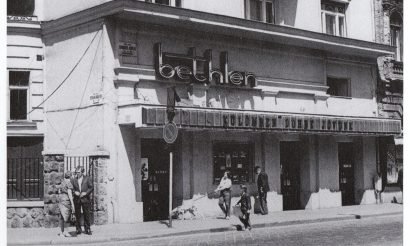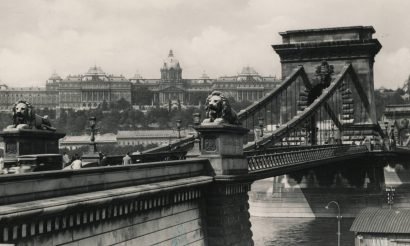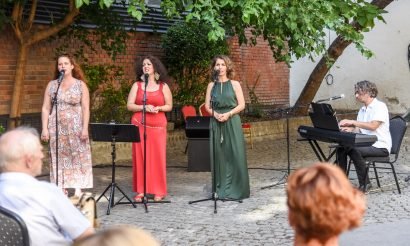A kisszebeni KeresztelÅ Szent JÃĄnos-fÅoltÃĄr – The main altar of St. John the Baptist in Kibe
A kÃķzÃĐpkori magyar mÅąvÃĐszet remekmÅąve – A masterpiece of medieval Hungarian art

A kisszebeni KeresztelÅ Szent JÃĄnos-fÅoltÃĄr       1496           The main altar of St. John the Baptist in Kiszeben 1496
A maga nemÃĐben pÃĄratlan mÅąalkotÃĄst mutattak be a Magyar Nemzeti GalÃĐriÃĄban 2020. szeptember 23-ÃĄn.
BaÃĄn LÃĄszlÃģ, a SzÃĐpmÅąvÃĐszeti MÚzeum â Magyar Nemzeti GalÃĐria fÅigazgatÃģja, Dabronaki BÃĐla a SzÃĐpmÅąvÃĐszeti MÚzeum â Magyar Nemzeti GalÃĐria vezetÅ restaurÃĄtora ÃĐs Poszler GyÃķrgyi mÅąvÃĐszettÃķrtÃĐnÃĐsz, a kiÃĄllÃtÃĄs kurÃĄtora mutattÃĄk be a teljes pompÃĄjÃĄban Újra megtekinthetÅ Kisszebeni KeresztelÅ Szent JÃĄnos-fÅoltÃĄrt, a kÃķzÃĐpkori magyar mÅąvÃĐszet remekmÅąvÃĐt.
BaÃĄn LÃĄszlÃģ tÃķbbek kÃķzÃķtt elmondta: âa magyar mÚzeumi tÃķrtÃĐnet talÃĄn leghosszabb restaurÃĄlÃĄsa ÃĐrt most vÃĐget. HetvenÃķt ÃĐven ÃĄt restaurÃĄtorok generÃĄciÃģi dolgoztak rajta, az utÃģbbi ÃĐvekben Dabronaki BÃĐla fÅrestaurÃĄtor vezetÃĐsÃĐvel. A mÅą olyan kort idÃĐz meg, amely egyik csÚcskorszaka volt MagyarorszÃĄg tÃķrtÃĐnetÃĐnek; a kÃĐsÅ MÃĄtyÃĄs-kor ÃĐs az azt kÃķvetÅ JagellÃģ-kor, mÃĐg a tÃķrÃķk hÃĄborÚk elÅtt. VÃĐlhetÅleg 1496-ban kÃĐszÞlt el az oltÃĄr Kisszebenben, amely jelentÅs ÃĐs gazdag vÃĄros volt LÅcse ÃĐs Kassa kÃķzÃķtt. A kÃķzÃĐpkori Magyar KirÃĄlysÃĄg egyik legnagyobb, leggazdagabb dÃszÃtÃĐsÅą szÃĄrnyasoltÃĄrÃĄnak restaurÃĄlÃĄsa fejezÅdÃķtt most be.â
A fÅoltÃĄr tÃķrtÃĐnete, Budapestre szÃĄllÃtÃĄsa a millennium ÃĐvÃĐben, 1944-es megmentÃĐsÃĐnek, sok ÃĐvtizedes restaurÃĄlÃĄsÃĄnak krÃģnikÃĄja ÃķnmagÃĄban is figyelemre mÃĐltÃģ.
Az ÃĐvszÃĄzadok folyamÃĄn sÚlyosan kÃĄrosodott mÅąalkotÃĄs a 19. szÃĄzad vÃĐgÃĐn kerÞlt mÚzeumi tulajdonba. A SÃĄros megyei Kisszeben KeresztelÅ Szent JÃĄnos-plÃĐbÃĄniatemplomÃĄbÃģl szÃĄrmazÃģ fÅoltÃĄrt ÃĐs a kÃĐt legimpozÃĄnsabb mellÃĐkoltÃĄrt â âmÅątÃķrtÃĐneti becsÞkâ megÅrzÃĐsÃĐnek szÃĄndÃĐkÃĄval â 1896-ban az orszÃĄg ezerÃĐves fennÃĄllÃĄsÃĄt ÞnneplÅ fÅvÃĄrosba szÃĄllÃtottÃĄk. ElÅszÃķr az IparmÅąvÃĐszeti MÚzeumban ÃĄllÃtottÃĄk fel, 1909-ben kerÞlt ÃĄt a SzÃĐpmÅąvÃĐszeti MÚzeumba, ahol elÅbb a RomÃĄn, majd 1928 ÃĐs 1944 kÃķzÃķtt a MÃĄrvÃĄny Csarnokban ÃĄllt.
Az oltÃĄrt 1944 novemberÃĐben, Budapest bombÃĄzÃĄsakor szÃĐtbontottÃĄk, ÃĐs a mÚzeum pincÃĐjÃĐbe menekÃtettÃĐk.
The altar was disassembled in November 1944, during the bombing of Budapest, and hidden in the basement of the museum.
A restaurÃĄlÃĄs 1954-ben kezdÅdÃķtt ÃĐs 2020 nyarÃĄn fejezÅdÃķtt be. HetvenÃķt ÃĐv utÃĄn, Újra teljes pompÃĄjÃĄban lÃĄthatÃģ a mÅą a Magyar Nemzeti GalÃĐria KÃĐsÅ gÃģtikus szÃĄrnyasoltÃĄrok kiÃĄllÃtÃĄsÃĄban.
A hÃĐtkÃķznapi oldalt dÃszÃtÅ kÃĐpek keretÃĐre Ãrt ÃĐvszÃĄm: 1496.
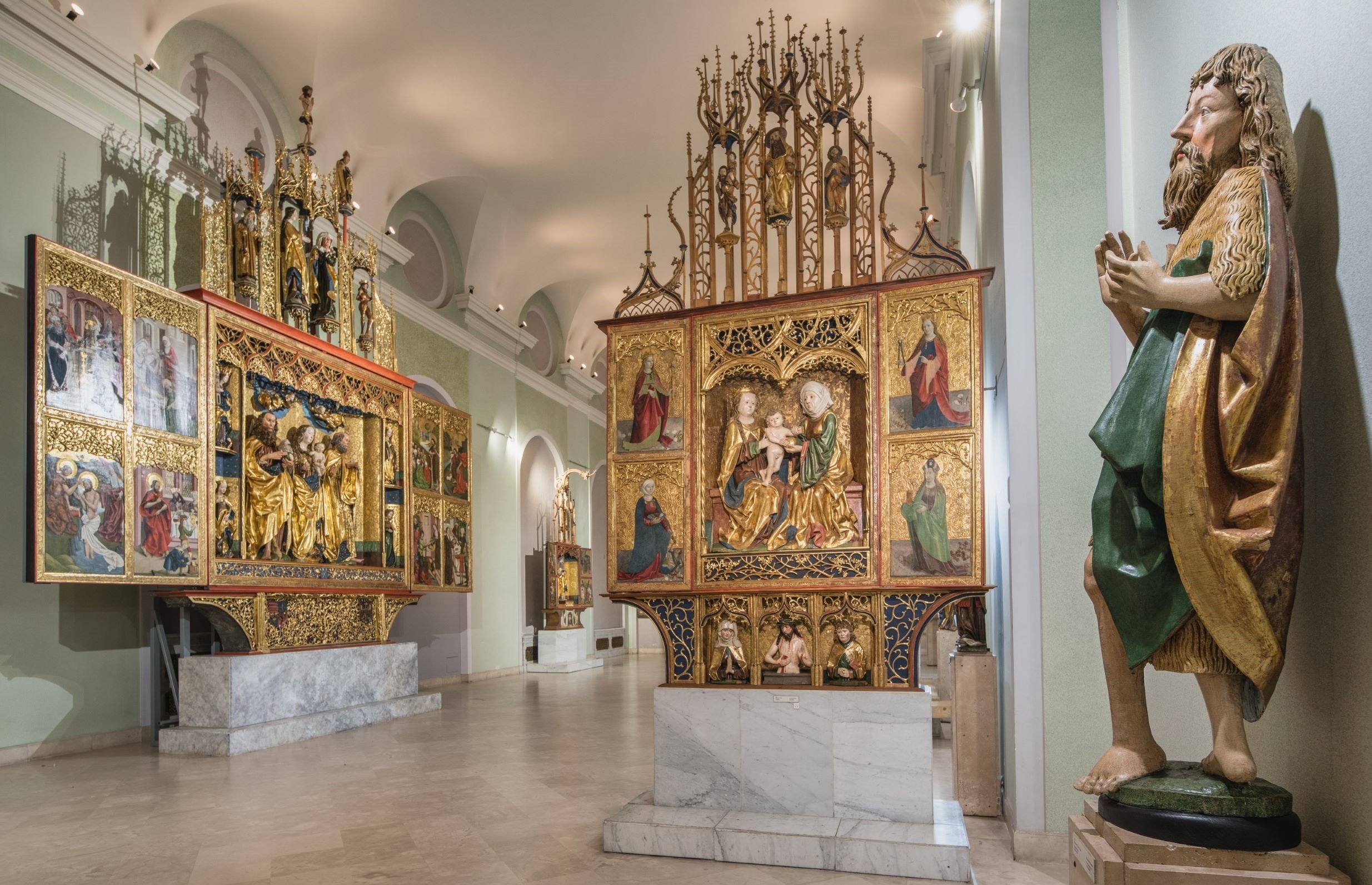
A kisszebeni oltÃĄr teljes pompÃĄjÃĄban a Magyar Nemzeti GalÃĐria KÃĐsÅ gÃģtikus szÃĄrnyasoltÃĄrok cÃmÅą kiÃĄllÃtÃĄsÃĄban          In the full splendor of the altar in Kiszeben in the exhibition of the Hungarian National Gallery Late Gothic Winged Altar
A virtuÃģzan faragott, lombdÃszekkel, szÅlÅfÞrtÃķkkel ÃĐs madarakkal ÃĐkes predella (az oltÃĄrasztal dÃszes talapzata, dobogÃģja) az oltÃĄregyÞttes egyik legpompÃĄsabb eleme volt. KÃĐtoldalt fontos heraldikai dÃszek, cÃmerpajzsok kaptak helyet rajta. A gazdagon aranyozott Þnnepi nÃĐzetben, a finom faragÃĄsÚ lombornamentikÃĄval dÃszÃtett, nagy formÃĄtumÚ tÃĄblakÃĐpeken KeresztelÅ Szent JÃĄnos legendÃĄjÃĄnak nyolc epizÃģdja tÃĄrul a hÃvek elÃĐ.
A fÅoltÃĄr ikonogrÃĄfiai kÞlÃķnlegessÃĐge a hÃĐtkÃķznapi oldal kÃĐpsorÃĄban rejlik, amely a magyarorszÃĄgi oltÃĄrmÅąvÃĐszetben, sÅt ebben a mÅąfajban, szÃĐlesebb kÃķrben is pÃĐlda ÃĐs pÃĄrhuzam nÃĐlkÞli: a balrÃģl jobbra olvasandÃģ kÃĐpsor az Apostoli hitvallÃĄs, a Credo tizenhat epizÃģdra bontott, a szÃķveget pontosan kÃķvetÅ, hittÃĐtelrÅl hittÃĐtelre haladÃģ ÃĄbrÃĄzolÃĄsa, illusztrÃĄciÃģja. A kÞlÃķnleges ÃĄbrÃĄzolÃĄsi program feltehetÅen a kiemelkedÅ kvalitÃĄsÚ ÃĐs pompÃĄjÚ fÅoltÃĄrt megrendelÅ adomÃĄnyozÃģ igÃĐnye szerint kÃĐszÞlt.
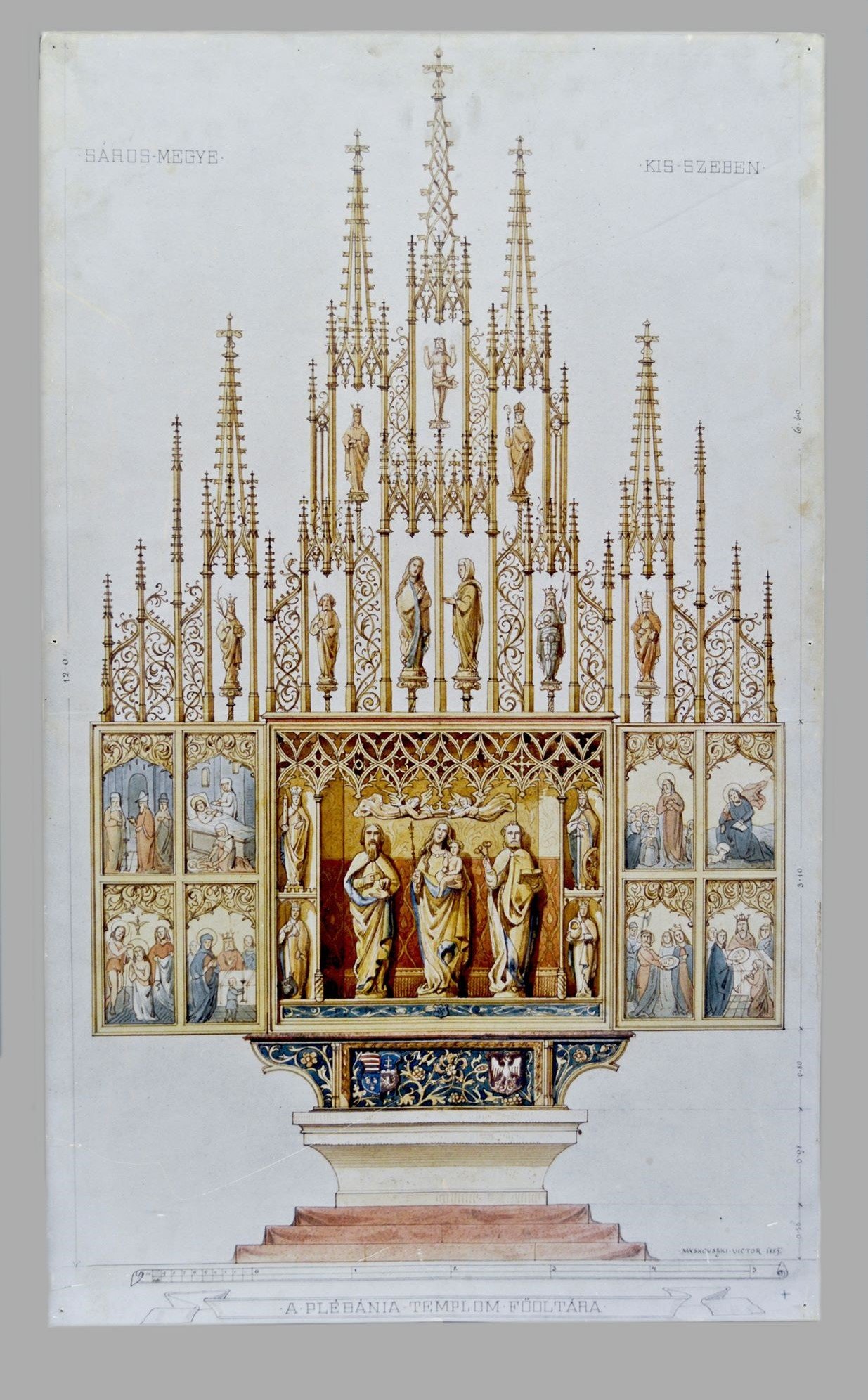
OltÃĄrrajz az eredeti ÃĄllapotrÃģl        SÃĄros megye        Kis Szeben        A plÃĐbÃĄnia templom fÅoltÃĄra          Altar drawing of the original state    SÃĄros county    Kis Szeben       The main altar of the parish church
2020. oktÃģber 9-ÃĐn, 15 Ãģrakor Poszler GyÃķrgyi mÅąvÃĐszettÃķrtÃĐnÃĐsz, a RÃĐgi Magyar GyÅąjtemÃĐny fÅmuzeolÃģgusa kurÃĄtori tÃĄrlatvezetÃĐsen mutatja be a Kisszebeni fÅoltÃĄrt
Magyar Nemzeti GalÃĐria, D ÃĐpÞlet, 1. emelet, KÃĐsÅ gÃģtikus szÃĄrnyas oltÃĄrok kiÃĄllÃtÃĄs
Memories of our golden age
The main altar of St. John the Baptist in Kibe
A masterpiece of medieval Hungarian art
An unparalleled work of art was presented at the Hungarian National Gallery on September 23, 2020.
LÃĄszlÃģ BaÃĄn, Director General of the Museum of Fine Arts – Hungarian National Gallery, BÃĐla Dabronaki, Chief Restorer of the Museum of Fine Arts – Hungarian National Gallery and GyÃķrgyi Poszler, art historian, curator of the exhibition, presented the main altar of St. John the Baptist in Kisszeben, a masterpiece of medieval Hungarian art, which can be seen again in all its splendor.
Among other things, LÃĄszlÃģ BaÃĄn said: âPerhaps the longest restoration of Hungarian museum history is now over. Generations of restorers have worked on it for seventy-five years, in recent years under the leadership of Chief Restorer BÃĐla Dabronaki. The work evokes one of the peaks of Hungarian history; in the late Matthias era and the subsequent Jagiellonian era, even before the Ottoman wars. Presumably, the altar was completed in 1496 in Kisszeben, which was a significant and rich city between LevoÄa and KoÅĄice. The restoration of one of the largest, richly decorated winged altars in the medieval Kingdom of Hungary has now been completed. â
The history of the main altar, its transport to Budapest in the year of the millennium, the chronicle of its rescue in 1944, its many decades of restoration is remarkable in itself.
The work of art, which had been severely damaged over the centuries, became the property of the museum in the late 19th century. The main altar from the parish church of St. John the Baptist in Kisszebe, SÃĄros County, and the two most impressive side altars were transported in 1896 to the capital, which celebrated the millennial existence of the country, with the intention of preserving their „art history”. It was first erected in the Museum of Applied Arts, in 1909 it was transferred to the Museum of Fine Arts, where it stood first in the Romanesque Hall and then between 1928 and 1944 in the Marble Hall.
The altar was disassembled in November 1944, during the bombing of Budapest, and hidden in the basement of the museum.
Restoration began in 1954 and was completed in the summer of 2020. After seventy-five years, the work can once again be seen in all its splendor at the exhibition of the Late- Gothic winged altars of the Hungarian National Gallery.
The date written on the frame of the pictures decorating the work-day side of the altar is 1496
The virtuoso-carved predella (ornate pedestal and podium of the altar table) adorned with foliage, bunches of grapes and birds was one of the most magnificent elements of the altar ensemble. Important heraldic ornaments and coats of arms were placed on both sides. Eight episodes of the legend of St. John the Baptist unfold before the faithful in the richly gilded festive view, on large-format plaques decorated with finely carved foliage.
The iconographic peculiarity of the main altar lies in the series of images on the work-day side, which in Hungarian altar art, and even in this genre itself, is unprecedented and without parallel: the series of images which should be read from left to right is the depiction and illustration of the Apostolic Creed, Credo, divided into sixteen episodes, following the text exactly, from dogma to dogma. The special depiction program was presumably made according to the needs of the donor who ordered the high altar of outstanding quality and grandeur.
On October 9, 2020, at 3 pm, art historian GyÃķrgyi Poszler, chief museologist of the Old Hungarian Collection and the curator of the exhibition, will present the main altar in Kisszeben.
Hungarian National Gallery, Building D, 1st floor, Late Gothic winged altars exhibition
DezsÅ KovÃĄcs

